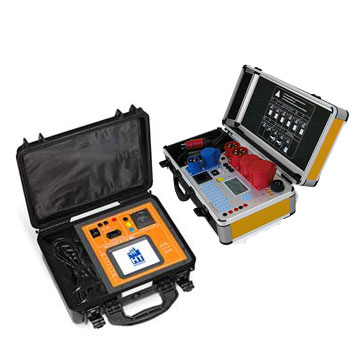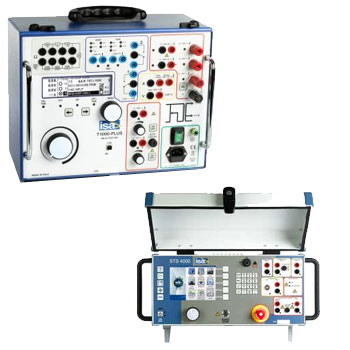
With the magnetic-inductive flow measurement, it is possible to measure conductive liquids with the highest accuracy. A measurement method based on Faraday's law of electromagnetic induction is used. An electrical signal is generated from the flow. The magnetic-inductive flow measurement is versatile and measures precisely even under extreme measuring conditions.
For which applications is this flow measurement intended?
Magnetic-inductive flow measurement is intended for conductive liquids, including water, pulp, sludge, acids, alkalis, juices and emulsions. This offers the possibility for many applications:
- Chemistry
- Pharmaceuticals
- Hygienic and sterile applications
- Filling and dosing applications
- Water, waste water
- Paper, pulp
Magneto-inductive flow measurement can also be used under special conditions. A very important factor is that the measurement can be carried out in potentially explosive atmospheres. Furthermore, a wide range of communication is required (HART, PROFIBUS DP/PA, FOUNDATION fieldbus, Modbus, EtherNet/IP, Bluetooth).
Function and structure
The basic principle of electromagnetic flow measurement is as follows: If a conductive liquid flows through a pipe filled with it through a magnetic field, an electrical voltage is generated whose magnetic field strength is proportional to the flow movement.
A magneto-inductive flowmeter has two field coils that generate a constant magnetic field over the entire cross-section of the pipe. Two electrodes are installed orthogonally, which pick up electrical voltage.
If there is no flow, no electrical voltage can be generated and no measurement takes place. The electrically charged particles of the medium are evenly distributed (on the drawing these particles are shown as red and blue dots). As soon as the medium begins to flow, the magnetic field exerts a force on the particles. Positive and negative particles are separated in the flowmeter area and accumulate at the electrodes. This creates an electrical voltage that is detected and measured by the electrodes. Stress is proportional to flow motion (velocity).
With the known measuring tube cross-section, the flow volume can be calculated.

How is interference voltage prevented?
Interference voltages detected by the electrodes must be isolated. This happens by building up the magnetic field using a clocked current field. For this purpose, the magnetic field is constantly reversed. The voltage tapped off at the electrodes also changes its polarity. This procedure eliminates all constant sources of interference, such as electrochemical effects in the medium and electromagnetic interference fields from the outside.
How are other disruptive factors excluded?
The prerequisite for electromagnetic flow measurement is that a magnetic field builds up inside the pipe and the voltage can be used without interference. Two excitation coils generate the magnetic field. It is important that austenitic steel is used as the tube material, as this is not magnetisable and therefore does not deflect the magnetic field of the exciter coils.
In order to avoid the possibility of further voltage discharge, the measuring tube has an insulating inner lining. The inner lining consists mostly of plastic (PP, PTFE, PEEK,...) or technical ceramics (alumina or zirconium oxide). It prevents short circuits between the conductive liquid and the metallic measuring tube.
The medium itself must be an electrical conductor. A minimum electrical conductivity between 20 µS/cm and 0.5 µS/cm must be (depending on the device).
The right electrode material
Selecting the right material for the electrodes is crucial for a correct measurement.
Galvanic signal aspect
Since the electrodes are in direct contact with the medium, they must be corrosion-resistant and ensure a well-functioning transition to the medium. The most common materials for this are:
- Stainless steels
- CrNi alloys
- Platinum
- tantalum
- Titanium
- Zirconium
If the sensors are equipped with ceramic measuring tubes, sintered electrodes are used.
Non-contact capacitive signal aspect
Non-contact capacitive signal termination is used for media with extremely low electrical conductivity and for media that form insulating deposits on the pipe wall that interrupt contact with the electrode.
Capacitor plates are attached to the pipe from the outside over a large area. If ceramic measuring tubes are used, the capacitor plates are sintered onto the aluminum oxide measuring tube.
Advantages and disadvantages of electromagnetic flow measurement
|
Advantages |
Disadvantages |
|
Independent of density, pressure, temperature and viscosity |
Requirement for a minimum conductivity |
|
Solid-laden liquids can also be measured |
Maximum medium temperature of 200° C |
|
No wear and tear (no moving parts) |
Minimum flow range approx. 0.5 m/s |
|
No pressure losses |
Inaccuracies in the raw water range due to iron deposits reducing the nominal |
|
No annoying built-in components |
|
|
CIP / SIP cleaning option, piggable |
|
|
Linear output signal |
|
|
Also for aggressive and corrosive media |
|
|
Conductivity not affected if greater than 5 µS/cm |
|
|
High measurement accuracy, even with the influence of gas and solids |
|
|
High reproducibility and durability |
|
|
Minimal maintenance |
SITRANS FM MAG 3100 P Full-bore electromagnetic flow sensor, flanged, diameter DN 15 to DN 300 (1/2" to 12"). Suitable for volume flow measurement of liquids (conductive), main applications in chemical industry, process industry, pulp & paper, industrial wastewater.

 Datasheet Datasheet |
 User Manual User Manual |
- Flexible and unique process connections
- Standard liner options that fully cover the food and beverage applications
- Short delivery time on standard process connections
- Sanitary design for CIP/SIP cleaning
- SITRANS FM portfolio – our integrated platform enables flexible use of the MAG 500 / 6000 transmitter for all products (MAG 5100 /3100/ 1100): • Unique SensorProm technology - stores critical, sensor-specific data and passes it to the transmitter. This allows a simple, flexible commissioning of the sensor. • Plug & Play - allows easy on-site replacement and commissioning of the transmitter in just minutes • "Hot swapable" - exchangeable during operation • Mounting flexibility - compact or separate installation possible • Validated calibration ensures accurate flow measurement. Each Siemens flowmeter is calibrated in facilities that are individually accredited to ISO / IEC 17025. • Service and diagnostics - Designed for MAG on-site verification with traceable certification. Regular calibration of the SITRANS FM Verificator ensures accuracy in the field.
 Datasheet Datasheet |
 User Manual User Manual |
- Flexible installation - IP68 (NEMA 6P) compliance allows installation in soil or underwater
- Low pressure loss and excellent leak detection
- Optimized lining allows good metering performance with low flow
- No maintenance - no moving parts and battery life of up to 15 years
- Maximum freedom in installations with low inlet and outlet distances
- Approved for MID-001 without defined length of inlet and outlet
- Remote access possible - running flow data through optional wireless 3G / UMTS communication module
 Datasheet Datasheet |
 User Manual User Manual |
SITRANS FM MAG 5100 W Electromagnetic flow sensor, flanged, diameter DN 15 to DN 1200 (1/2" to 48"). Suitable for volume flow measurement of liquids (conductive) , for applications in water abstraction, water & wastewater treatment, water distribution networks, custody transfer metering.
 Datasheet Datasheet |
 User Manual User Manual |
SITRANS FM MAG 6000i Electromagnetic flow transmitter, works with sensors of type MAG 1100, MAG 3100 and MAG 5100W. Suitable for volume flow measurement of liquids (conductive), die-cast aluminium enclosure. . Remote transmitter Die cast aluminium Processing code Standard transmitter: 18-90 V DC, 115-220 V AC 50/60 Hz Standard sensor: FM Class I, Div 2, CSA Class I,Div 2 Local Display No Communication . Metric

 Datasheet Datasheet |
 User Manual User Manual |
SITRANS FM MAG 6000i Electromagnetic flow transmitter, works with sensors of type MAG 1100, MAG 3100 and MAG 5100W. Suitable for volume flow measurement of liquids (conductive), die-cast aluminium enclosure. . Remote transmitter Die cast aluminium Processing code Standard transmitter: 18-90 V DC, 115-220 V AC 50/60 Hz Standard sensor: FM Class I, Div 2, CSA Class I,Div 2 Local Display No Communication . Metric

 Datasheet Datasheet |
 User Manual User Manual |
















































































































































































